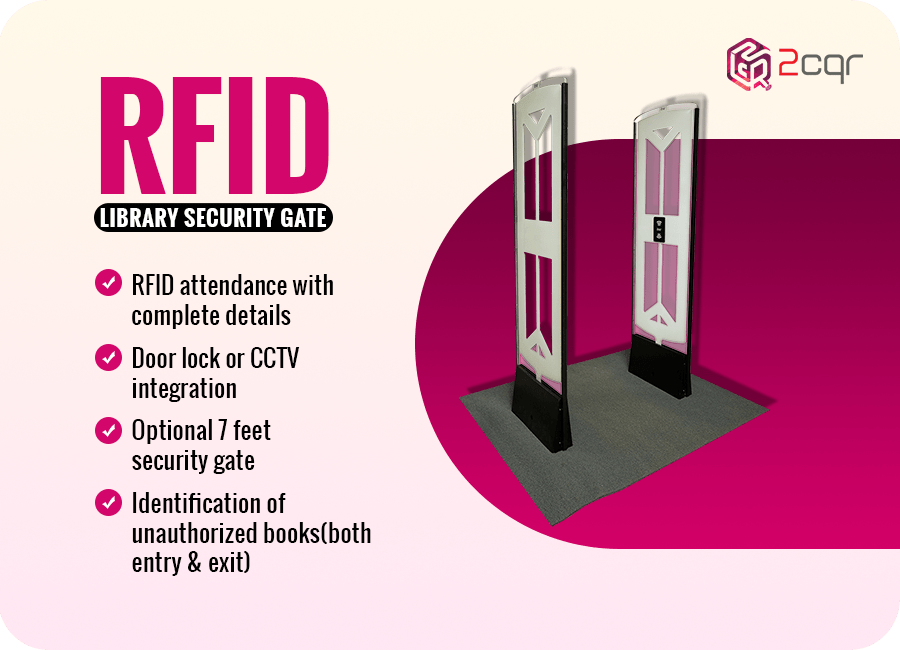
Security is paramount in libraries worldwide, and RFID-based library management systems have revolutionised how libraries maintain control over their valuable resources. RFID security gates play a pivotal role in preventing unauthorised individuals from entering the library premises, contributing significantly to an enhanced user experience. However, one challenge that can disrupt this experience and frustrate library staff is the occurrence of false alarms.
In this article, we will delve into the reasons behind these false alarms and explore possible solutions to overcome this issue.
Tag Interference
One of the well-known factors that can lead to false alarms in libraries and reduce the experience of RFID for library is tag interference. The presence of interference can hinder the readability of RFID tags, resulting in misinterpreted information or an inability to detect any information, which, in turn, is perceived as unrecorded checkouts and triggers alarms.
To mitigate this issue, it’s crucial to educate library patrons about items that can cause tag interference, such as metal objects and electronic devices like mobile phones and chargers. Patrons should be informed to keep books with RFID tags away from these items to prevent false alarms.
Book Placement or Carrying
The distance, placement, and orientation of RFID tags concerning the reader play a crucial role in ensuring accurate readability. Library staff often adjust the settings of RFID readers when necessary to optimize performance.
However, many library users may not be aware of the best practices for carrying and placing books when passing through RFID security gates integrated with the readers. Minor mistakes made by patrons can result in inconvenience and disrupt their library experience.
To tackle this issue, it’s essential to prioritise providing clear guidelines on the proper handling and placement of books to prevent unnecessary alarms.
Environmental Factors
External environmental conditions can also contribute to false alarms in libraries. Factors such as high temperatures, humidity, and moisture can cause wear and tear on RFID tags, ultimately damaging their functionality.
When RFID tags are compromised, reading errors occur, and tag performance efficiency decreases, leading to irritating false alarms for library staff. To address this concern, libraries should opt for high-quality RFID tags and offer guidance to patrons on suitable places to store library resources.
Different users taking out the same books under various environmental conditions can significantly impact tag functionality.
Maintenance
Neglecting the maintenance of passive RFID tags, no matter how minor the wear and tear may seem, can result in complete tag failure. This, in turn, renders the tags undetectable by the RFID system, leading to false alarms. It’s imperative to emphasise the significance of periodic testing and calibration of RFID gates to maintain accuracy and minimise false alarms. Establishing a routine maintenance schedule for RFID gates is recommended to ensure they function optimally and reduce the likelihood of false alarms.
Adjusting Sensitivity
Passive RFID systems are predominantly used in library management, and these systems are equipped with RFID readers set at maximum sensitivity to maintain read ranges. This setting allows RFID systems to read multiple tags simultaneously.
However, adjusting the sensitivity settings of the RFID readers to operate within specific read ranges can help mitigate interference and ensure a seamless library experience. By fine-tuning the reader sensitivity, libraries can reduce the chances of false alarms while maintaining efficient tag recognition.
In conclusion, while RFID for library has greatly improved library security and user experience, it’s essential to address the issue of false alarms. Educating patrons about tag interference, book handling, and the impact of environmental factors, along with regular maintenance and sensitivity adjustments, can go a long way in ensuring that RFID library security gates operate smoothly, enhancing the overall library experience for both staff and users.


